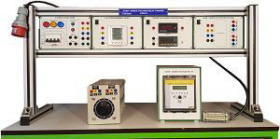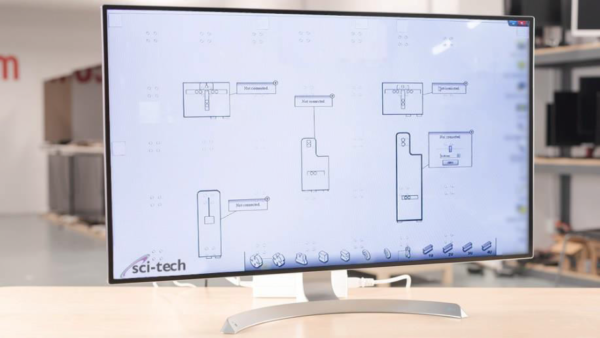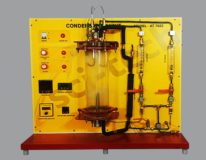Integrated Structural Engineering Studies Apparatus Model MT 152
Home » Products » Integrated Structural Engineering Studies Apparatus Model MT 152
Integrated Structural Engineering Studies Apparatus Model MT 152
‘Sci-tech’ Integrated Structural Engineering Studies Apparatus Model MT 152 is designed to understand structural behavior in cantilevers, beams & portal frames studies. On a transparent panel the experiment carried out are directly displayed on the HMI panel.
‘Sci-cal’ software enables the study of the related trainer exercise.
Modern structural engineering makes extensive use of computer programs to provide the detailed analysis, design and 3D modelling of structures. Once a structure becomes even slightly complex the calculations involved exceed what can be sensibly implemented using manual or spreadsheet calculations.
Modern teaching practice focuses on the use of these structural engineering analysis programs. Although these provide a superb numerical analysis facility, they rely totally on the user having an inherent understanding of the structure to be analysed. Unfortunately, this is not always the case.
The analysis is only as good as the information provided and can do nothing to improve an inherently flawed concept.
Conventional structural engineering teaching equipment does little to provide this understanding, focusing on detailed analysis of simple situations, it makes no attempt to encourage the student to think of what really matters when designing or analysing structures.
‘Sci-tech’ has developed their own proprietary integrated hardware and software specifically to address this issue of understanding structural behavior.
The range of equipment enables a wide variety of structural models to be assembled and understood. It deliberately uses a series of elements, which provide an exaggerated response enabling the deflections to be observed on the display screen.
When coupled to the display software, the sensors, the actuators and the analysis software, the equipment provides an unsurpassed and unique learning experience.
| Size: | 80cm x 60cm x 40cm (LxWxH) |
| Weight: | 25 kg |
Item Description
Features
- State-of-the-art unique integrated approach to structural engineering studies
- Designed to carry our practical studies and comparison to theoretical studies
- Experiments carried out can be observed simultaneously on software panel
- Special metallic elements to ensure high accuracy as well as longevity
- Elements fabricated on laser CNC machines for high accuracy
- Sensors & instrumentation easily mountable for more than 12 practical structural trainers
- Ten practical trainers integrated on one unit including cantilevers, beams & portal frames
- ‘Sci-cal’ proprietary software that enables ease of calculations while observations
- Optional ‘Sci-calvaq’ Internet-Of-Thing (IoT) Augmented Reality (AR) System
‘Sci-tech’ Integrated Structural Engineering Studies Apparatus Model MT 152 is designed to understand structural behavior in cantilevers, beams & portal frames studies. On a transparent panel the experiment carried out are directly displayed on the HMI panel.
‘Sci-cal’ software enables the study of the related trainer exercise.
Modern structural engineering makes extensive use of computer programs to provide the detailed analysis, design and 3D modelling of structures. Once a structure becomes even slightly complex the calculations involved exceed what can be sensibly implemented using manual or spreadsheet calculations.
Modern teaching practice focuses on the use of these structural engineering analysis programs. Although these provide a superb numerical analysis facility, they rely totally on the user having an inherent understanding of the structure to be analysed. Unfortunately, this is not always the case.
The analysis is only as good as the information provided and can do nothing to improve an inherently flawed concept.
Conventional structural engineering teaching equipment does little to provide this understanding, focusing on detailed analysis of simple situations, it makes no attempt to encourage the student to think of what really matters when designing or analysing structures.
‘Sci-tech’ has developed their own proprietary integrated hardware and software specifically to address this issue of understanding structural behavior.
The range of equipment enables a wide variety of structural models to be assembled and understood. It deliberately uses a series of elements, which provide an exaggerated response enabling the deflections to be observed on the display screen.
When coupled to the display software, the sensors, the actuators and the analysis software, the equipment provides an unsurpassed and unique learning experience.
See also different:

Sci-tech Over - Under Voltage Protection Relays Trainer Model ELTR 004-01 Sci-tech Directional Over Current Relay Trainer Model ELTR 004-02 Sci-tech Percentage Based Differential Relay Trainer Model ELTR 004-03 Sci-tech Power Factor Control Re [...]



